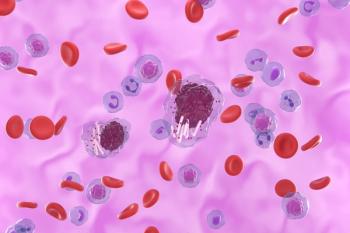
Patients With GPP Face Elevated Mortality Risk, Study Finds
Key Takeaways
- GPP patients have a nearly 5-fold increased mortality risk at 1 year and a 4-fold increased risk over long-term follow-up compared with the general population.
- The study underscores the need for improved treatment options and effective clinical management for GPP and its flares.
US claims data show patients with generalized pustular psoriasis (GPP) face up to a 4-fold higher mortality risk compared with the general population.
Patients with generalized pustular psoriasis (GPP) have nearly 5 times the risk of all-cause mortality at 1 year and 4 times the risk over long-term follow-up compared with the general population, according to an observational US claims data analysis study published in the
“This underscores the need for improved treatment options, expanded use of the available options, and more effective clinical management of acute, generalized forms of psoriasis and psoriasis flares,” wrote the researchers of the study.
GPP is a rare, chronic neutrophilic autoinflammatory disease that presents with both skin and systemic symptoms such as fever, pain, and fatigue.2 Unlike plaque psoriasis (PsO)—the most common form of psoriasis, affecting the majority of the 2% to 3% of the global population with the condition—GPP is recognized as a distinct clinical entity with unpredictable flares that can significantly impact quality of life.
The study used US claims data from January 1, 2016, to December 31, 2019, to evaluate all-cause mortality in patients with GPP compared with those with plaque PsO and the general population.1 Patients were grouped into 5 cohorts: GPP-only, GPP + PsO, All-GPP (combined), plaque-PsO-only, and the general population. Mortality rates were assessed at both 365 days and maximum follow-up. Diagnosis was based on International Classification of Disease, 10th Revision (ICD-10) codes, with the index date defined as the first medical claim or a randomly assigned date for the general population.
The study included 2630 patients with GPP (1,246 GPP-only and 1,384 GPP + PsO), 127,540 patients with plaque PsO, and over 19.6 million individuals from the general population. At the 365-day follow-up, the all-cause mortality rate in the GPP-only cohort was 1.0%, rising to 5.7% at maximum follow-up.
Compared with the general population, patients in the All-GPP cohort had a nearly 5-fold higher mortality risk at 1 year (HR, 4.93; 95% CI, 2.24-10.88) and nearly 4-fold higher risk at maximum follow-up (HR, 3.98; 95% CI, 2.92-5.43). Mortality risk was also significantly elevated in the All-GPP cohort compared with the plaque PsO-only group at maximum follow-up (HR, 1.49; 95% CI, 1.20-1.85). These findings align with prior research, underscoring a persistent and substantial mortality burden in patients with GPP.
However, the researchers noted the study has several limitations, including the lack of data on specific causes of death, which limited the ability to determine whether mortality was directly related to GPP flares, comorbidities, or unrelated factors. Additionally, diagnoses were based on administrative claims data and ICD-10 codes, which may have been subject to misclassification or underreporting, particularly for a rare and clinically complex condition like GPP.
The analysis also lacked detailed clinical information such as flare severity, treatment regimens, and disease duration, which are important for understanding prognosis and treatment impact. Finally, while propensity score matching helped reduce confounding, residual confounding from unmeasured variables could not be ruled out.
Despite these limitations, the researchers believe the study adds to the limited but growing body of evidence highlighting the elevated mortality risk associated with GPP, as well as reinforces the urgent need for improved clinical recognition, targeted therapies, and long-term disease management strategies for individuals with GPP.
“These findings fill a significant gap in the existing literature and highlight both the need for increased awareness of the mortality burden in GPP and the need for continuous treatment options for patients with GPP both during and after flares,” wrote the researchers.
References
1. Gottlieb AB, Crooke Kwiatkowski H, Semeco J, et al. All-cause mortality is higher in generalized pustular psoriasis (GPP) than plaque psoriasis and the general population: A US-based claims analysis. J Psoriasis Psoriatic Arthritis. May 30, 2025. doi:10.1177/24755303251344155
2. What is generalized pustular psoriasis (GPP)? Boehringer Ingelheim. Accessed June 3, 2025.
Newsletter
Stay ahead of policy, cost, and value—subscribe to AJMC for expert insights at the intersection of clinical care and health economics.









































